There are a number of artifacts related to Biblical archaeology in museums across the world. One of these museums is the Bible Lands Museum Jerusalem. Located in Jerusalem’s Givat Ram neighborhood, the Bible Lands Museum Jerusalem houses one of the world’s most important collections of Biblical artifacts. The collection was begun by the late Elie Borowski in 1943 and first opened to the public in 1992. The thousands of artifacts provide an informative introduction to the peoples and places of the Bible. One can spend days exploring the cultures of the Israelites, the Arameans, the Philistines, the Egyptians, the Assyrians, the Persians and many more in great detail. Biblical quotes are located throughout the galleries to place the Bible in its historical context. The museum also has special exhibitions, such as By the Rivers of Babylon, which focused on one of the most significant events in the history of the Jewish people—the Babylonian Exile. Below are 10 of the museum’s many wonderful Biblical artifacts, listed in no particular order. Click on the images to enlarge them.
| Yahweh Ṣebaot Inscription
This limestone inscription from a burial cave in Judah c. 800–750 B.C.E. is written in Paleo-Hebrew script and reads “Cursed be Hagaf son of Hagab by Yahweh Ṣebaot.” The phrase Yahweh Ṣebaot, often translated as “Lord of Hosts,” appears over two hundred times in the Hebrew Bible, especially in prophetic books such as Isaiah and Jeremiah. The museum’s inscription is perhaps the earliest non-Biblical evidence for this name. The name Hagab, which means “grasshopper,” also appears in Ezra 2:46. |
Learn more about the Paleo-Hebrew script in “How Ancient Taxes Were Collected Under King Manasseh” and “Precursor to Paleo-Hebrew Script Discovered in Jerusalem.”
| The Larsa Tablet
This Akkadian tablet, which contains over 630 lines, comes from the southern Mesopotamian city of Larsa during the second year of King Rim-Sîn’s reign, c. 1821 B.C.E. The tablet registers the rites performed in Larsa’s many temples from the fifteenth until the twenty-fourth day of the month of Shabaṭu, the month identical to the Biblical month of Shebat (Zechariah 1:7). This one-of-a-kind tablet sheds light on the practices of the region from where Abraham is said to have come. For example, on the sixteenth day of the month of Shabaṭu, a cloak, a bright linen and a male slave were given to Enki, the god of wisdom and the creator of humankind. |
| The Quadrilingual Darius I Jar
Darius I of Persia, also known as “Darius the Great,” is mentioned in the Biblical books of Haggai, Zechariah, Malachi, Ezra, Nehemiah and Daniel. The museum has a Persian calcite jar with four inscriptions that praise Darius in four different languages, one more language than the Rosetta Stone. The Old Persian, Elamite and Akkadian inscriptions read “Darius, great king” and the Egyptian hieroglyphs read “King of Upper and Lower Egypt, lord of the two lands, Darius, living eternally, year 36.” Coincidentally, the 36th year of Darius’s reign (486 B.C.E.) was also his last. |
| The Lion and Calf Bowl
According to Isaiah’s prophecy of peace, “The wolf shall dwell with the lamb, the leopard shall lie down with the kid and the calf and the lion and the fatling [will dwell] together” (11:6). On the museum’s unique serpentinite bowl from southern Mesopotamia c. 3300–2900 B.C.E., lions and calves are depicted lying down peacefully one after the other. The animals are crouched before a bundle of stylized reeds (not shown), much like the reeds carved into a door at the base of the Ziggurat of Anu, one of the oldest and most important Sumerian gods. |
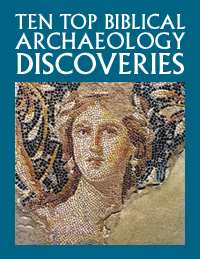
| Relief of Ark-like Image
According to Exodus 25:10–16, the Ark of the Covenant was a rectangular box carried on poles. The museum has a Basalt Relief from Arslan Tash (Northern Syria, ancient Hadatu) from c. 800–750 B.C.E. which depicts two men carrying a rectangular box on poles. Notice the buckets, which are found in a number of Assyrian ritualistic reliefs and suggest that the men might be priests. Two key differences between this image and the Biblical description is that the Bible’s ark had its poles at its base, not its top, and that the Bible’s ark had two poles, not one. |
| The Jonah Sarcophagus
The sarcophagus of a 4th-century C.E. Christian from Rome named Glycon depicts three scenes from the Biblical book of Jonah. On the left Jonah is cast overboard into the mouth of a terrifying fish (Jonah 1:1– 2:1). On the right Jonah is cast ashore (Jonah 2:10), where God provides him with a plant in order to teach him compassion (Jonah 4:4–11). According to Matthew 12:40, Jonah is analogous to the resurrection: “For as Jonah remained in the belly of the sea-monster for three days and three nights, so will the Son of God be in the heart of the earth for three days and three nights.” |
Become a Member of Biblical Archaeology Society Now and Get More Than Half Off the Regular Price of the All-Access Pass!
Explore the world’s most intriguing Biblical scholarship
Dig into more than 9,000 articles in the Biblical Archaeology Society’s vast library plus much more with an All-Access pass.

| The Ivory Cherub
According to the Bible, cherubs were placed in both the Tabernacle and the Temple (Exodus 37:7–9; 1 Kings 6:23–30). While the descriptions about these creatures are vague, the museum has an ivory Phoenician-style cherub from Arslan Tash (Northern Syria, ancient Hadatu) from c. 850–800 B.C.E. This cherub, which was probably called a kuribu in Akkadian (similar to Hebrew kerub [כרוב]), was most likely used to decorate a chair, perhaps the throne of the Hazael, king of Damascus, who is mentioned in the books of Kings, Chronicles and Amos. |
| The Christogram Sarcophagus
This large Roman sarcophagus belonged to a Christian woman named Julia Latronilla, who died in approximately 330 C.E.—shortly after Constantine’s Edict of Toleration, which allowed Christians to worship freely. The sarcophagus depicts a number of Hebrew Bible and New Testament scenes, e.g., Abraham’s near sacrifice of Isaac (Genesis 22), the miracle at Cana where Jesus turned water into wine (John 2:1-11), and Jesus’ triumphal entry into Jerusalem (e.g., Matthew 21:1–11). The circle in the center is one of the earliest known depictions of the christogram, a symbol that combines the first two letters of the Greek name for Christ, chi (X) and rho (P). |
Learn about the earliest image of Jesus on the cross—the staurogram—in Bible History Daily.
| The Rab-Shaqeh Stela
In 2 Kings 18:18–37, which recounts the events of 701 B.C.E., an Assyrian official called the Rab-Shaqeh (“Chief Cupbearer”) besieges and taunts the people of Jerusalem. The museum has a stele commissioned by a Rab-Shaqeh who served a century and a half before the Bible’s Rab-Shaqeh, approximately 859–825 B.C.E., during the reign of Shalmeneser III. The inscription commemorates this Rab-Shaqeh’s deeds within his province. The image is that of a seated god with a horned helmet and a sun disk. |
| The Nile Boat
The Nile plays a prominent role in the Hebrew Bible, especially in the Exodus story. The Pharaoh of Joseph dreams of cows at the river (Genesis 41:1–3), baby Moses is placed in a basket at the riverbank (Exodus 2:3) and the first Egyptian plague occurs when the river turns to blood (Exodus 7:15–24). The museum has a model Nile boat made of wood, plaster and linen that comes from the early Middle Kingdom, c. 2000–1900 B.C.E. The boat has a pilot standing on the prow, a steersmen sitting on the stern and eighteen rowers in between. The boat is currently equipped for sailing downstream (north) but would have also had sails to travel upstream (south). Boats such as these were often placed in tombs for the journey of the afterlife. |
A very special thank you to Olla Vengerovsky and the staff of the Bible Lands Museum Jerusalem for their help with this article.
This Bible History Daily feature was originally published on January 28, 2015.—Ed.
 David Z. Moster, PhD, is a Research Fellow in Hebrew Bible at Brooklyn College and a Lecturer in Rabbinics at Nyack College. He is the author of the upcoming book Etrog: How a Chinese Fruit Became a Jewish Symbol (Palgrave Macmillan, 2018). His websites are www.929chapters.com and brooklyn-cuny.academia.edu/DavidMoster.
David Z. Moster, PhD, is a Research Fellow in Hebrew Bible at Brooklyn College and a Lecturer in Rabbinics at Nyack College. He is the author of the upcoming book Etrog: How a Chinese Fruit Became a Jewish Symbol (Palgrave Macmillan, 2018). His websites are www.929chapters.com and brooklyn-cuny.academia.edu/DavidMoster.
More by David Moster in Bible History Daily:
The 10 Strangest Foods in the Bible
More Biblical artifacts in Bible History Daily:
The Tel Dan Inscription: The First Historical Evidence of King David from the Bible
Puzzling Finds from Kuntillet ‘Ajrud
The Siloam Pool: Where Jesus Healed the Blind Man
The Nag Hammadi Codices and Gnostic Christianity
The post 10 Great Biblical Artifacts at the Bible Lands Museum Jerusalem appeared first on Biblical Archaeology Society.
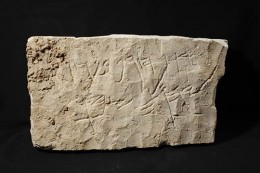
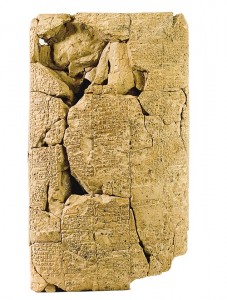
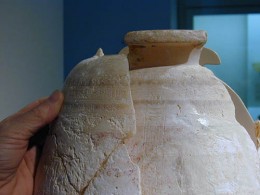
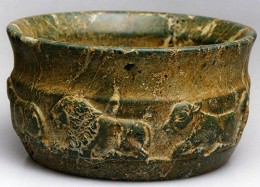
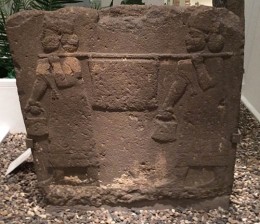

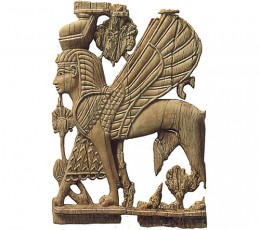

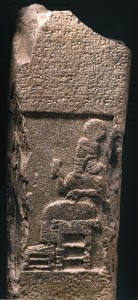



0 Commentaires